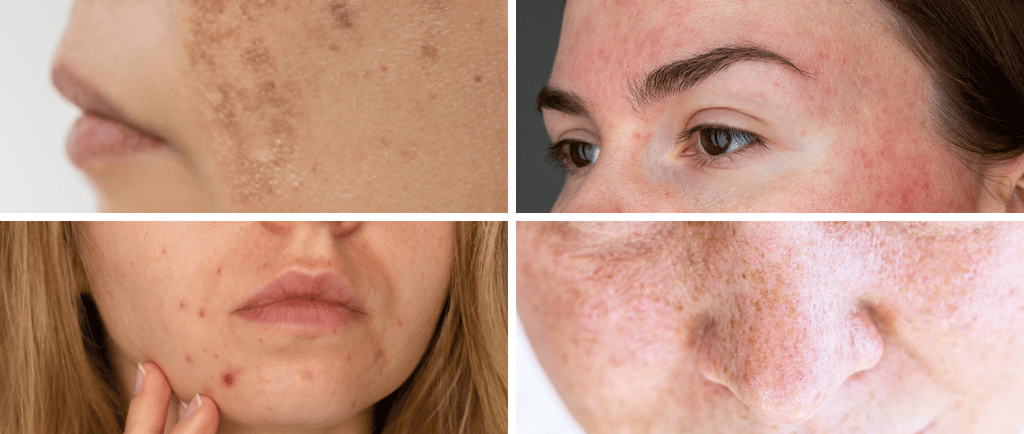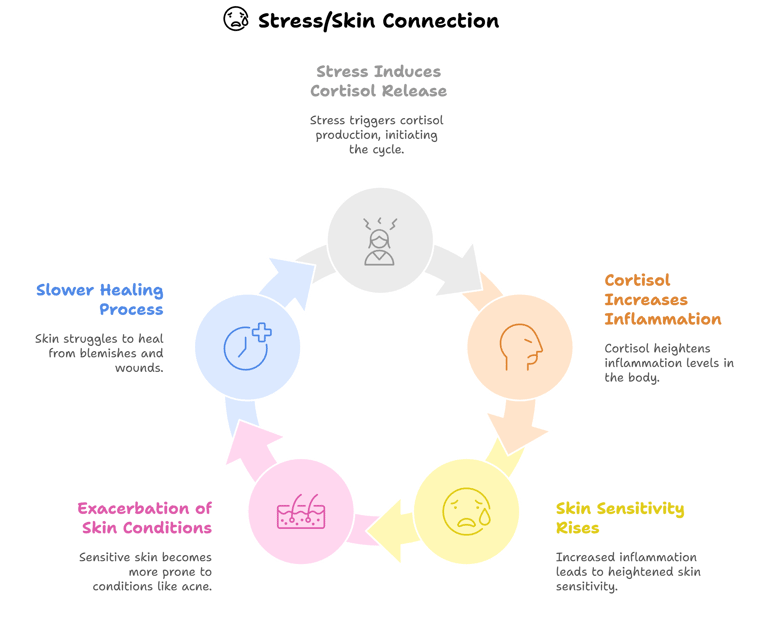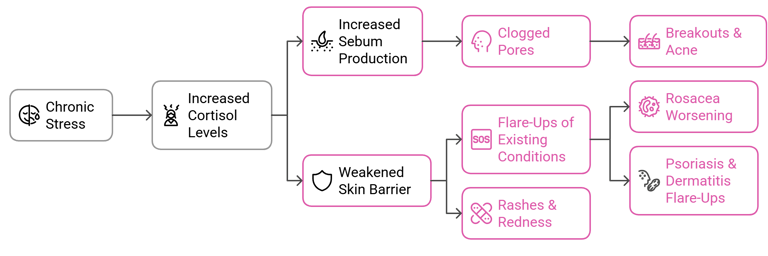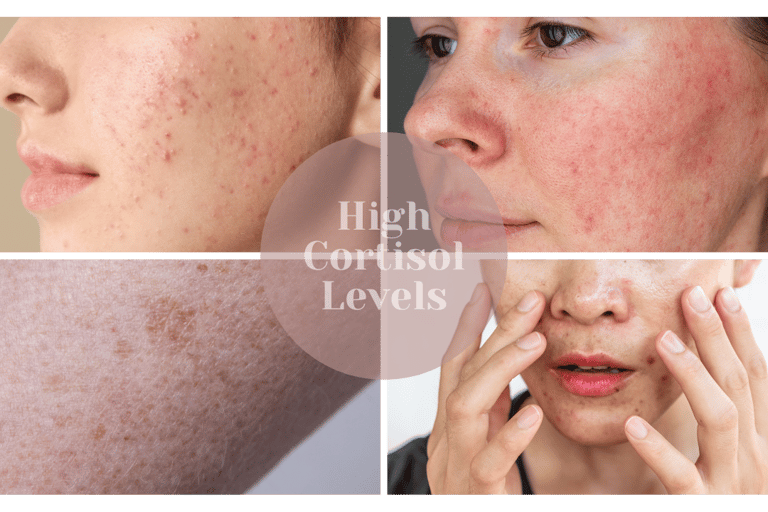Stress, Skin & Cortisol: How to Lower Cortisol and Glow from Within
You know that one pimple that shows up right before an important event? Or how your skin suddenly feels drier, oilier, or just... off when you’re overwhelmed? You can thank (or blame) cortisol for that.
6 min read


Cortisol: The Stress Hormone That Impacts Your Skin
Cortisol is your body’s built-in alarm system—it’s the hormone released when you’re stressed. In small amounts, it helps you stay alert and energized. But when stress sticks around too long (hello, endless to-do lists and doomscrolling at midnight), cortisol goes into overdrive, and your skin pays the price.
The Link Between Cortisol and Skin Health
When cortisol levels remain elevated for too long, they wreak havoc on your skin in several ways. Chronic stress triggers inflammatory responses, alters oil production, and even affects how your skin heals. Let’s break down the major ways cortisol impacts your complexion.
1. Inflammation and Sensitivity
Cortisol is directly linked to inflammation, which can make your skin more sensitive and reactive. When your body is in a prolonged state of stress, it releases chemicals that increase redness, irritation, and swelling.
How This Affects Your Skin:
Natural Ways to Reduce Cortisol and Improve Your Skin
The good news? There are plenty of ways to manage stress and keep cortisol levels in check, helping your skin regain its glow. By making small but impactful changes to your lifestyle, you can promote healthier skin and overall well-being.
1. Get Enough Sleep
Your skin does most of its repair work while you sleep, and a lack of rest can disrupt your body's natural healing process. Poor sleep increases cortisol levels, leading to inflammation, breakouts, and a dull complexion.
Tips for Better Sleep:
Stick to a consistent sleep schedule, even on weekends.
Avoid screens (blue light) at least an hour before bed.
Create a relaxing nighttime routine—try reading, deep breathing, or herbal tea.
Use blackout curtains and keep your bedroom cool and dark.
Aim for seven to nine hours of quality sleep each night to help regulate stress hormones and keep your skin looking refreshed.
2. Boost Your Vitamin D
Vitamin D plays a crucial role in regulating cortisol levels and reducing inflammation in the body. Deficiency in this essential vitamin has been linked to increased stress, anxiety, and skin conditions like acne and eczema.
How to Get More Vitamin D:
Spend 10 to 30 minutes in sunlight daily (without sunscreen, but not too long to avoid damage).
Eat vitamin D-rich foods like salmon, egg yolks, and fortified dairy products.
Take a vitamin D supplement if you don’t get enough from sunlight and food.
By ensuring adequate vitamin D intake, you can support your body’s ability to manage stress and maintain a healthy, glowing complexion.
3. Stay Active
Exercise is one of the most effective ways to lower cortisol levels naturally. Physical activity helps regulate stress hormones, improve circulation, and deliver oxygen and nutrients to skin cells.
Best Exercises for Lowering Cortisol:
Yoga and Pilates – Gentle, stress-relieving, and great for circulation.
Walking or Jogging – A 30-minute walk outdoors can instantly reduce stress.
Strength Training – Helps regulate blood sugar and cortisol levels.
Dancing or Aerobics – Fun, mood-boosting workouts that release endorphins.
3. Visible Signs of High Cortisol Levels
If your cortisol levels remain high for long periods, you might start noticing visible skin changes, including:
Increased acne, especially along the jawline and chin.
Thinning skin that bruises easily due to collagen breakdown.
Delayed wound healing, making blemishes and cuts linger longer.
Dry, dull complexion, as stress reduces the skin’s ability to retain moisture.
Puffiness, particularly in the face, due to increased water retention.
4. The Impact on Facial Appearance
Long-term stress can alter the way your face looks. A "high cortisol face" often appears:
Puffy or swollen, especially around the eyes and cheeks.
Saggy and wrinkled, as cortisol breaks down collagen and elastin
Tired and dull, due to poor circulation and moisture loss.
If you've ever looked in the mirror after a stressful week and thought, "Why do I look so tired?"—cortisol is likely the culprit.
5. Changes in Skin Pigmentation
Excess cortisol can interfere with melanin production, leading to hyperpigmentation or uneven skin tone.
How This Shows Up:
Dark patches on the skin, often on the face, linked to stress-induced melasma.
Uneven skin tone, making some areas darker than others.
Post-inflammatory hyperpigmentation (PIH), where stress-related acne leaves behind stubborn dark marks.


2. Stress-Related Skin Conditions
Chronic stress can trigger or worsen various skin problems. Here are some common conditions linked to high cortisol:
Breakouts & Acne:
Elevated cortisol increases sebum (oil) production, leading to clogged pores and pimples.
Stress weakens the skin barrier, making it easier for bacteria to cause inflammatory acne.
Rashes & Redness:
Stress-induced hives or eczema often appear as red, itchy patches.
A compromised skin barrier allows irritants to penetrate more easily, worsening irritation.
Flare-Ups of Existing Conditions:
Rosacea symptoms may worsen due to increased blood flow, causing persistent redness and visible blood vessels.
Psoriasis and dermatitis may become more severe as cortisol disrupts skin cell renewal, leading to flaky or scaly patches.


6. Checking Your Cortisol Levels
If you suspect your skin issues are caused by high cortisol, you might want to check your levels through these tests:
Saliva Test: Measures cortisol levels at different times of the day.
Blood Test: Provides a snapshot of current cortisol levels.
Urine Test: Detects how much cortisol your body produces over 24 hours.
Understanding your cortisol levels can help you pinpoint the cause of stress-related skin problems and take steps to manage them effectively.


Regular movement prevents stress-induced breakouts and inflammation while keeping your skin looking healthy and radiant.
4. Eat a Skin-Friendly Diet
Your diet has a direct impact on cortisol levels and skin health. Processed foods, sugar, and high-glycemic meals can spike cortisol and contribute to inflammation, breakouts, and premature aging.
What to Eat:
Omega-3 fatty acids: Found in salmon, chia seeds, and walnuts, these help reduce inflammation.
Antioxidant-rich fruits and vegetables: Blueberries, spinach, and bell peppers fight oxidative stress.
Healthy fats: Avocados, olive oil, and nuts support skin elasticity.
Probiotics: Yogurt, kimchi, and kefir support gut health, which affects cortisol levels.
What to Avoid:
Refined sugar and processed foods – These can cause cortisol spikes and worsen acne.
Excess caffeine and alcohol – They dehydrate the skin and stress the body.
A balanced diet not only lowers cortisol but also keeps your skin hydrated, clear, and youthful.
5. Be Mindful of Your Caffeine Intake
While coffee can give you a much-needed energy boost, too much caffeine can spike cortisol levels, leading to increased stress and breakouts.
Caffeine Tips for Healthier Skin:
Limit coffee intake to one or two cups per day.
Switch to herbal teas like chamomile, green tea, or ashwagandha tea, which help calm the body.
Drink plenty of water to stay hydrated and prevent skin dryness.
If you struggle with stress-related skin issues, reducing caffeine can make a noticeable difference.
6. Manage Stress Effectively
Since stress is a direct trigger for high cortisol, learning to manage it effectively is crucial for both your mental well-being and your skin health.
Best Stress-Reduction Techniques:
Deep Breathing and Meditation – Just five minutes a day can significantly lower cortisol levels.
Aromatherapy – Essential oils like lavender, chamomile, and sandalwood promote relaxation.
Journaling and Gratitude Practice – Writing down your thoughts can help clear mental clutter and reduce anxiety.
Social Connection – Spending time with loved ones, laughing, and engaging in enjoyable activities all help lower stress hormones.
By incorporating relaxation techniques into your routine, you can prevent cortisol-related skin issues and maintain a youthful, healthy complexion.
Gentil Reminder:
Your skin is a mirror of your internal health, and stress plays a huge role in how it looks and feels. By keeping cortisol in check through lifestyle changes, good skincare, and mindfulness, you can protect your skin from the negative effects of stress. So next time life feels overwhelming, take a deep breath, prioritize self-care, and remember—your skin will thank you. 🌿


